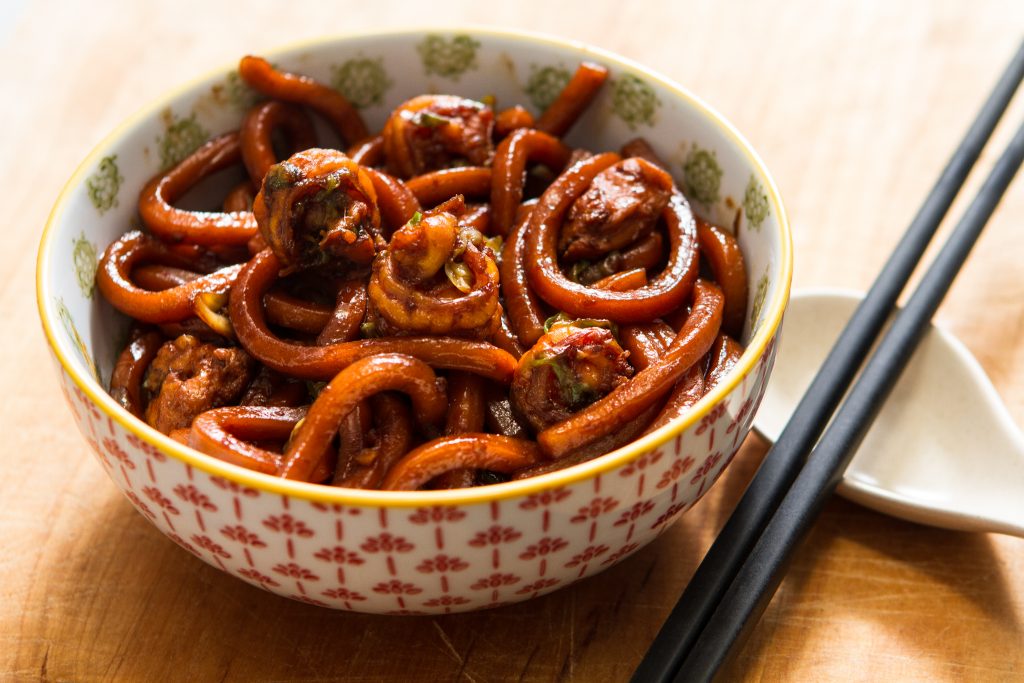
KL Hokkien Mee is a dish unique to the central region of Peninsula Malaysia. Created a many generations ago by Kim Lian Kee in Petaling Street, Kuala Lumpur, it is such a favourite amongst Malaysian-Chinese and Malaysian-Indian communities.
Today, KL Hokkien Mee is available at many kopitiams all over the country, with the exception of Penang and the surrounding areas. In Penang, Hokkien Mee refers to a prawn and pork soup noodles dish which folks in KL refer to as Mee Yoke or Prawn Mee. But Mee Udang also Prawn Mee in Kuala Sepetang and this also refers to something else entirely different, but I digress, as that is not the story for today.
Anyway, Penangites would call KL Hokkien Nee ‘Tai Lok Mee/Mein” which means thick noodles. Funnily enough, ‘Tai Lok Mein’ is also what I called it growing up as a Klang Valley boy. I can’t remember when everyone else started calling it Hokkien Mee.
Traditionally, KL Hokkien Mee is cooked with a lot of pork and lard. It is always an amazing spectacle to watch the sifu wokking this dish over charcoal fire. Sometimes not only embers dramatically float towards the heavens, filling the night sky and somehow this dish is always a late evening dish, but with the intense heat they use, the most expert of sifu would create controlled towers of fire to explode from the wok too. Just watch out for the soot marks on the ceiling.
Food cooked like this is usually full of what the Cantonese would call ‘wok hei‘ – literally the wok’s breath, but I think what it means is, food that is filled with life and power of the wok.
There have been attempts to recreate it in halal Chinese eateries, and unfortunately some of them just come across as limp sweet black soya sauce gravy with noodles, but some can be really nice. Sadly, many non-halal eaters would look down upon these versions as inferior, as not the real thing, as they are not infused with lard or garnished with any deep fried pork fat cubes. That’s their problem though, because there’s always more than one way to enjoy food.
Like language, food is dynamic ever evolving and sometimes totally changing, from generation to generation – which is why, presently Malaysians seem to be dumping fake cheese or Milo drink powder into everything edible – I think a whole new genre of cuisine is being created and awaiting for us in the future.
The first halal KL Hokkien Mee that I had which I really enjoyed was in a recreational club, in which the chef deftly replaced the flavours of pork with that of seafood and chicken, and so I’ve always called halal KL Hokkien Mee, Golf Club Style Hokkien Mee. Don’t ask me which club it was- it was the 1980s, so I cannot remember.
Over the years this dish seems to have been a split into two distinct cooking methods and styles – one which is the one with the noodles and ingredients are fried in a relatively straight forward manner with lots of oil and soya sauce, and the other, the ingredients and noodles are fried and then braised or simmered with a soup stock until it almost dries up – the Hokkien Mee of Singapore is also something like this except that the KL version is cooked with more wok hei and it is also darkened by the use of different grades of soya sauce. I suspect this wet version is how it was originally made.
Today I am going to show you how to make the latter one, using a stock of leftover soup from my other dish Ipoh shredded chicken hor fun. We will be cooking with prawns and chicken and cabbage, using a home kitchen induction hob and a couple of saucepans. This setup will never get to be as hot and as high octane as the restaurants’ but it will work too, albeit with a longer cooking time. This recipe serves 2 – 3 people.
Ingredients
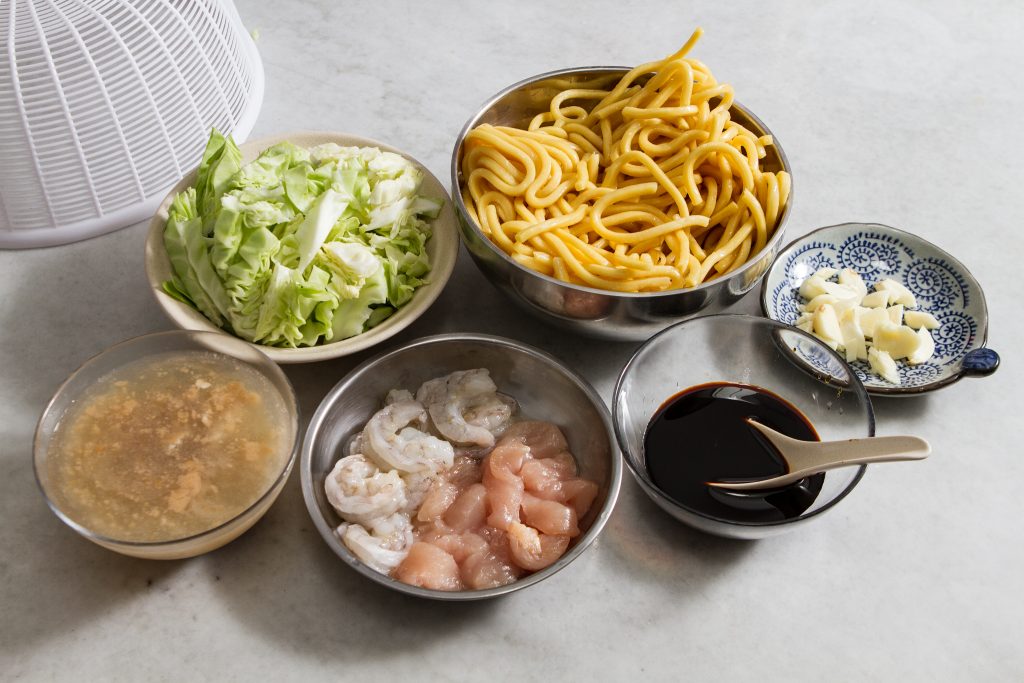
480g thick yellow noodles (one packet – different suppliers make this noodles slightly differently)
20g garlic (about half a bulb)
77g chicken, sliced (can have more, as it won’t change the dish)
9 pieces medium sized prawns, deshelled and gutted
175g Beijing cabbage, chopped (can put more if you like)
250ml (275g or 1 rice bowl’s fill) soup stock from leftover Ipoh Hor Fun
32g cooking oil (3 Chinese soup spoon)
Mix together
1. 65g thick dark soya sauce (3 Chinese soup spoons) – slightly sweet
2. 36g light soya sauce (2 Chinese soup spoons) – very salty
Note: I used naturally fermented, zero MSG soya sauces.
Optional
1. Add in sotong, cut into slices. I opted to make this example without it for personal health reasons. Adding this would give the dish an added dimension in seafood flavour.
2. Add in sliced fish cakes – again will add extra depth to the flavour.
Method
1.Fill half a 2 litre saucepan with water, boil it and then blanch the thick yellow noodles for a minute or two.
2. Drain all the water off – it will look yellow, and smells too. Do it a second time, fill the water, boil it and then blanch the noodles again, drain off all the water. We are doing this to remove the excess alkaline from the noodles. If the noodles you bought are coated in oil, this will also remove that oil.
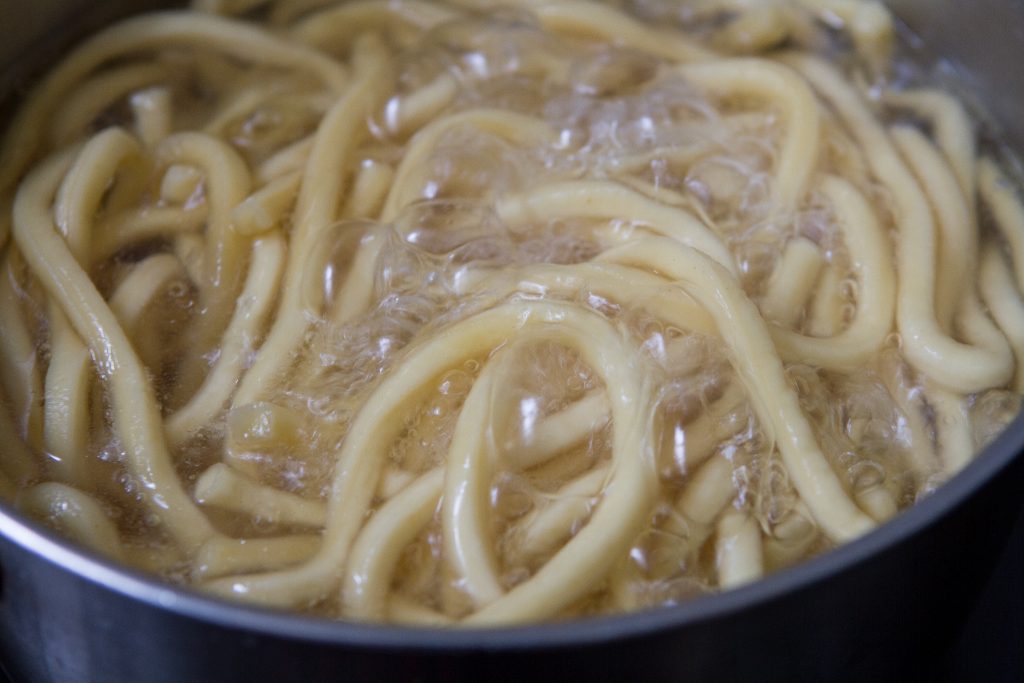
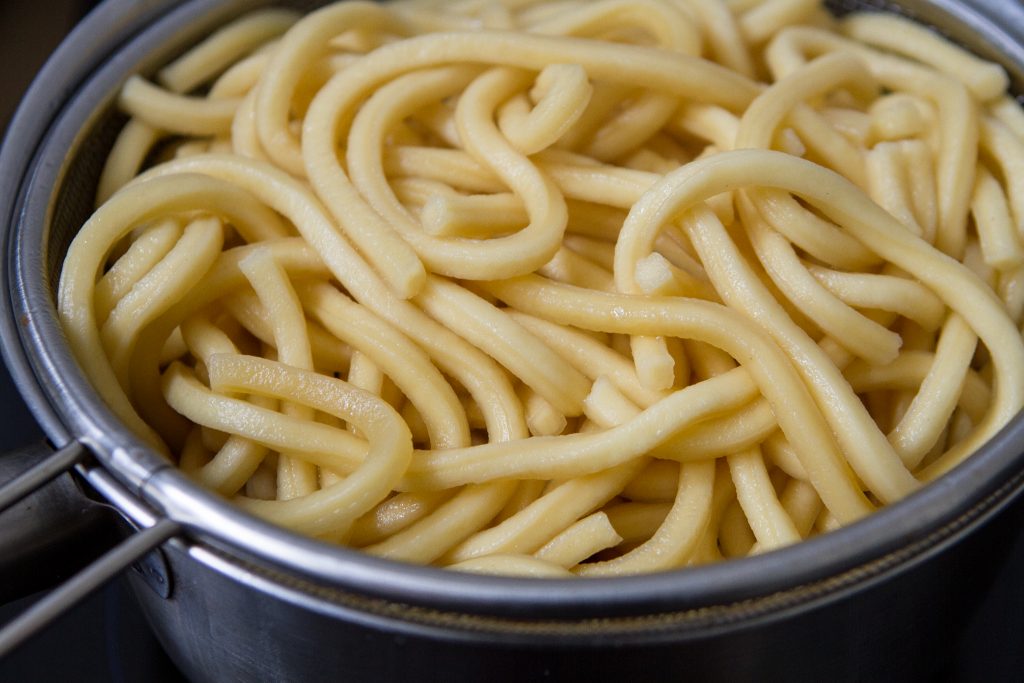
2. In the wok/ saucepan, in the highest frying setting, heat up the cooking oil. Put in the garlic and fry till browned.
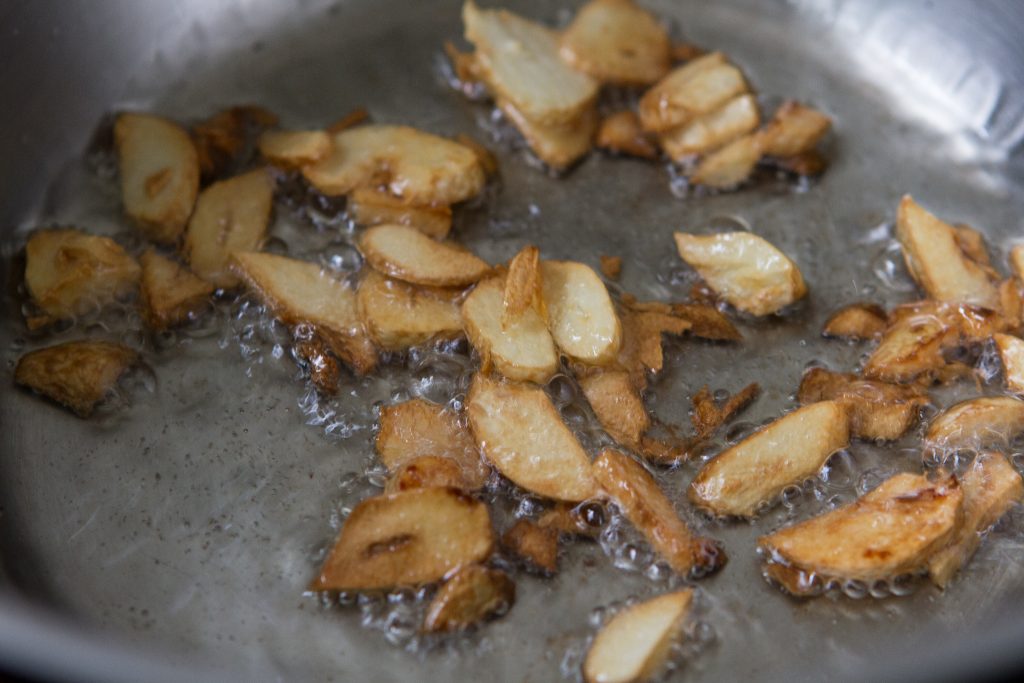
3. Put in the prawns and chicken. Stir fry briefly until the surfaces of the prawn and chicken has changed colour. Warning: if your meat or prawns are too wet, watch out for splattering hot oil.
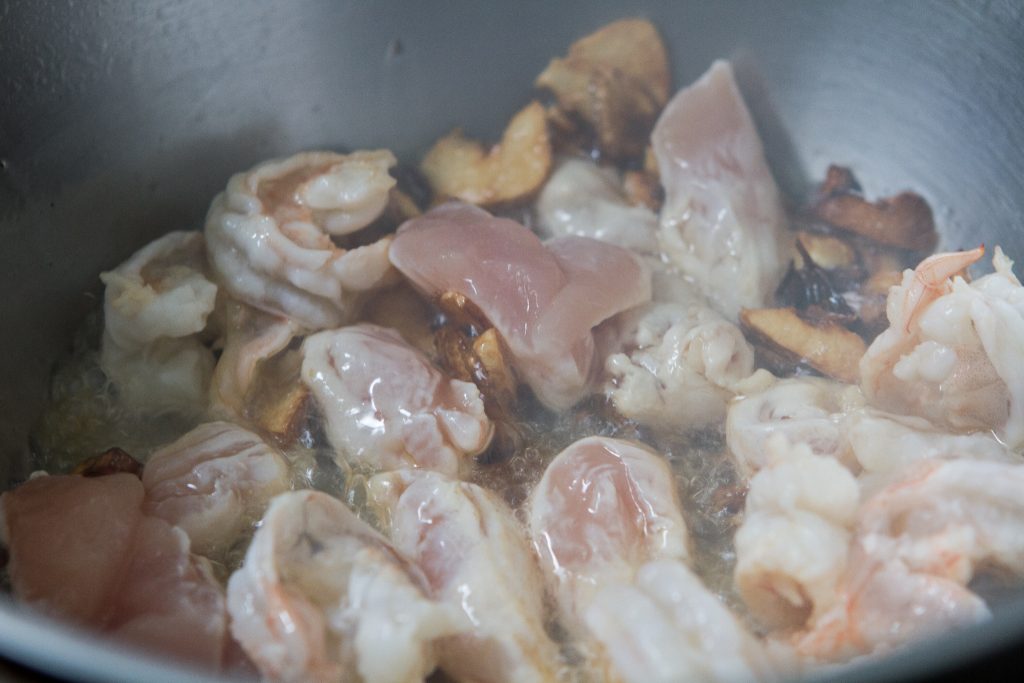
4. Stir in the soya sauce mix. Stir fry everything!

5. Throw in the chopped cabbage. Stir stir!
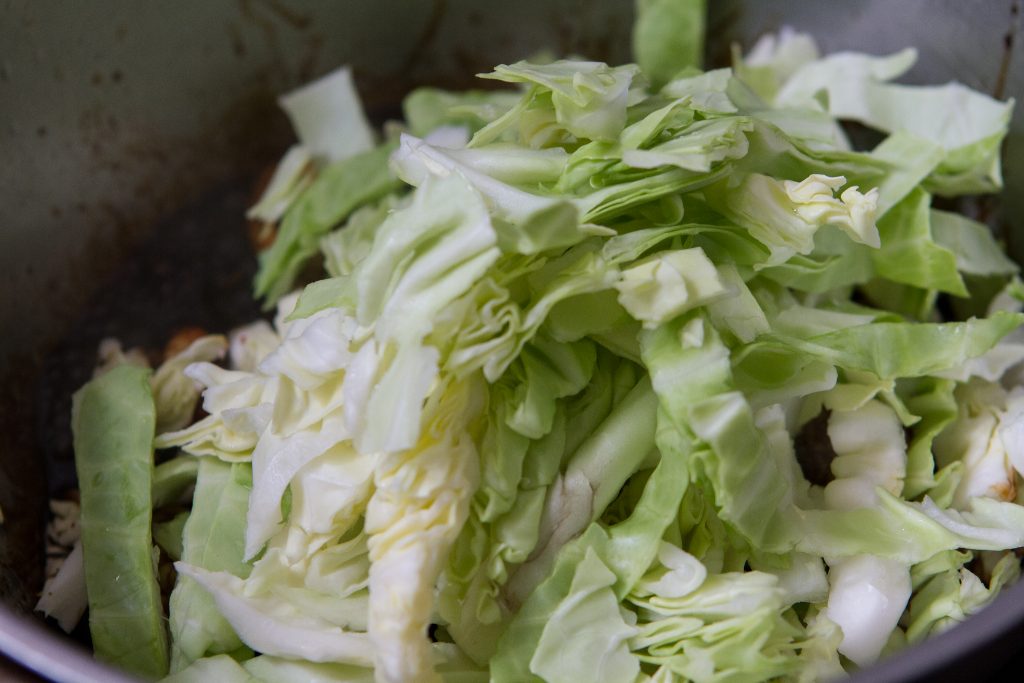
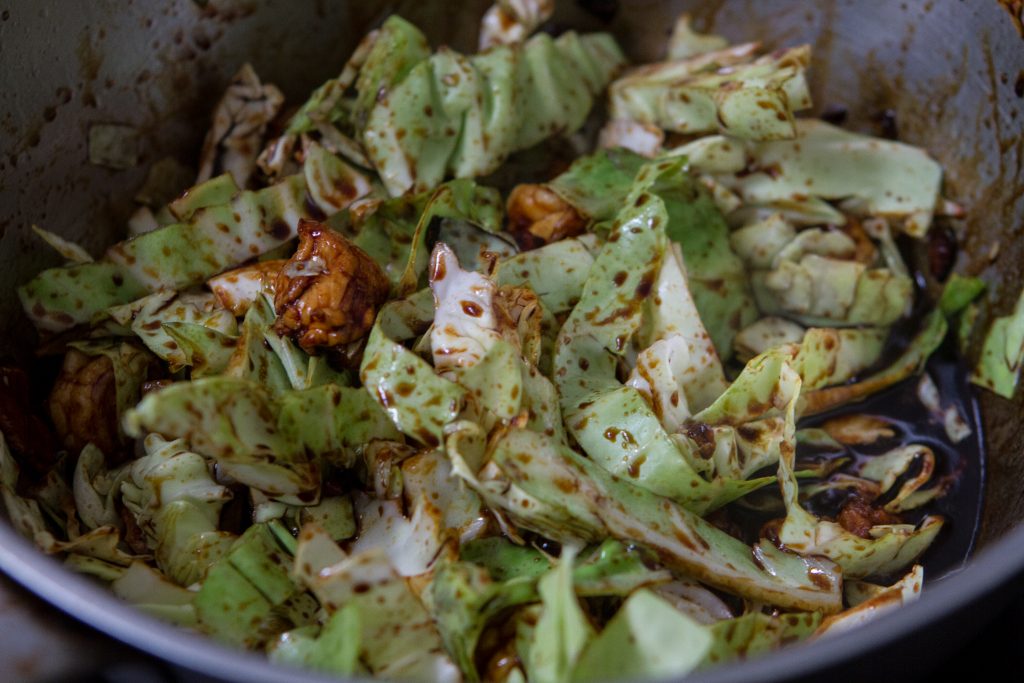
6. Dunk in the noodles. Stir fry it all together until even.
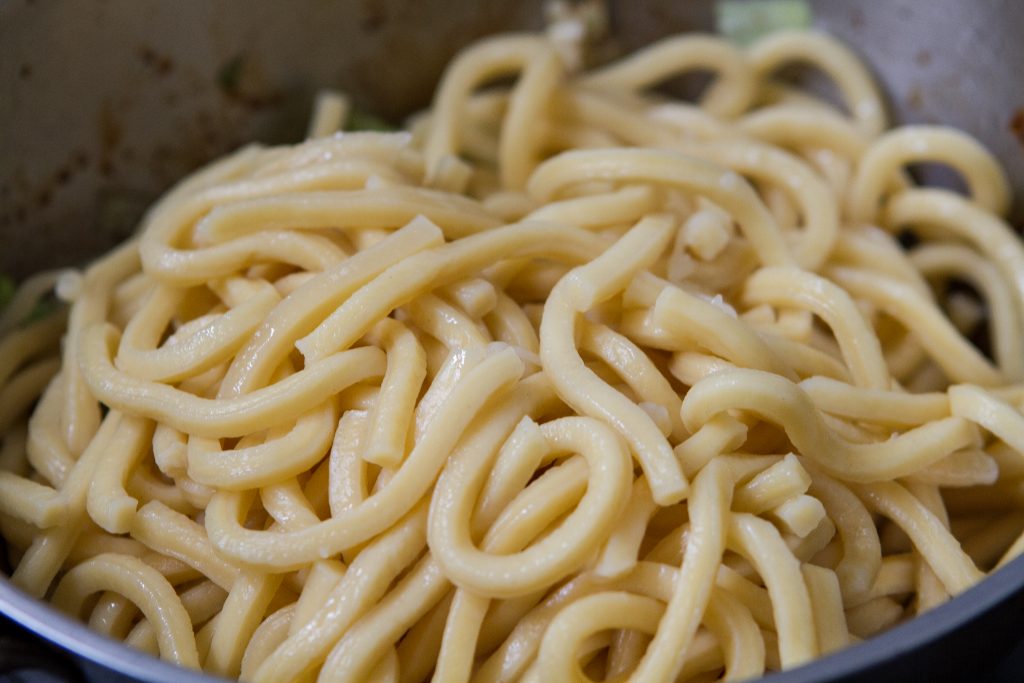
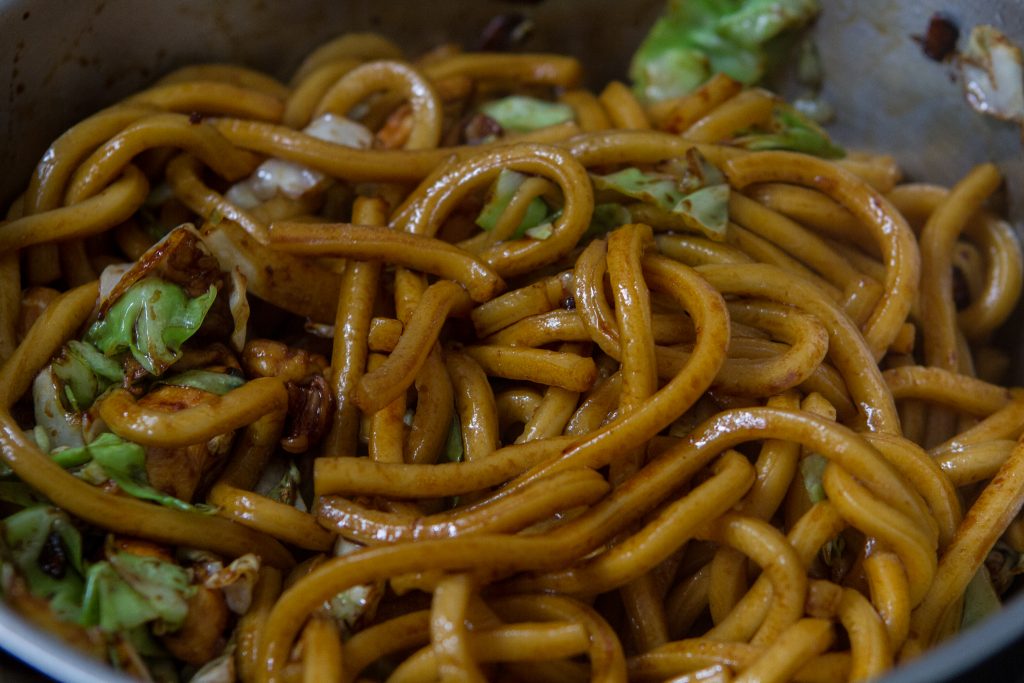
7. Pour in the soup stock, stir and wait until it simmers before reducing heat and cover with lid.
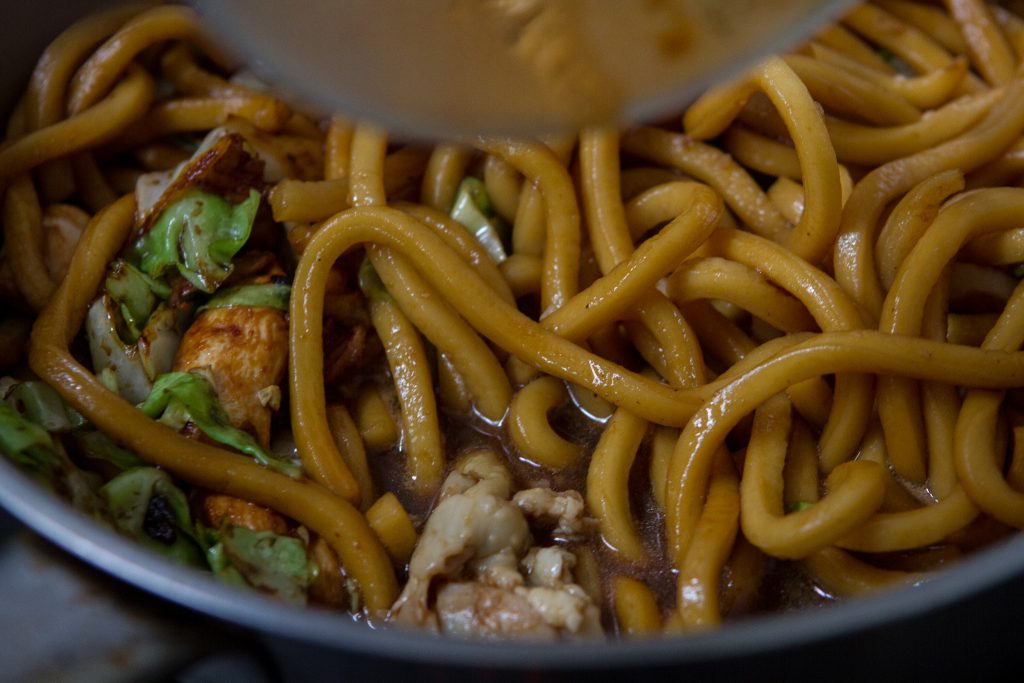
8. Reduce heat to low, and close the lid. Let it simmer for 5 minutes.

9. Remove lid after 5 minutes, set the hob to highest frying setting and keep stirring until the sauce reduces further. Depending on the heat of your hob, this could take a couple of minutes to a lot more. If you are adding squid, perhaps now is the time to do it (add in any earlier and it would have become quite tough and rubbery).
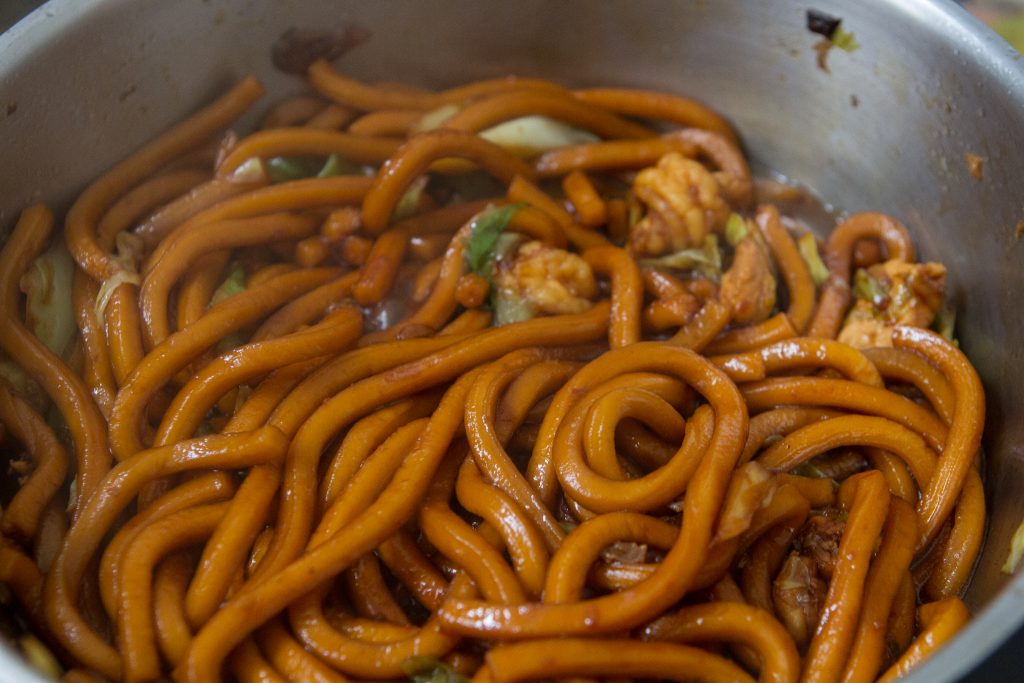
10. Turn off, close the lid and let it rest for a couple of minutes or more. During this time, the noodles will soak in the gravy and absorb it. Tip: the longer you let it soak in the gravy the tastier it gets.
11. Divide noodles among plates. Serve with a side of sambal if you wish.
This is one of my go to recipes, it’s delicious every single time. I hope you enjoy making it. For more of my food adventures, follow me on Instagram or check out my other recipes on Butterkicap here.
